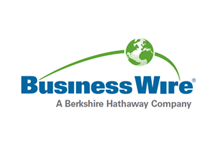$300 Million Opportunities and Competitive Analysis of the Flame Retardant Resin in the Transportation Composites Market - Global Forecast to 2026 - ResearchAndMarkets.com
The "Opportunities and Competitive Analysis of the Flame Retardant Resin in the Transportation Composites Market Report: Trends, Forecast and Competitive Analysis" report has been added to ResearchAndMarkets.com's offering.
The global flame retardant resin in the transportation composites market is expected to decline in 2020 due to the global economic recession led by COVID-19 However, the market will witness recovery in the year 2021, and it is expected to reach an estimated $0.3 billion by 2026 with a CAGR of 4.8% from 2021 to 2026.
The future of the global flame retardant resin in the transportation composites market looks promising with opportunities in opportunities in the automotive, and mass transit, applications.
The major drivers for this market are increasing demand for lightweight composite parts to meet FST (fire, smoke, toxicity) properties for interior parts in transportation such as roof, lavatory, seats, partitions, sidewalls, ceiling panels, doors, windows, and slide out panels.
Emerging trends, which have a direct impact on the dynamics of the industry, include growing usage of halogen-free FR composite material with fire-retardancy properties, and emergence of bio base FR prepregs.
In this market, various resins, such as polyester, epoxy, phenolic, and vinyl ester flame retardant additives are used to manufacture various composites parts for transportation applications.
The analyst forecasts that polyester resin will remain the largest segment; phenolic resin is expected to witness highest growth over the forecast period due to high fire resistance properties than other resins. Phenolic resin in the flame retardant resin in the transportation composites is expected to witness the highest growth in the forecast period due to increased awareness on its performance and the increased demand for lightweight components in the global markets.
Within the global flame retardant resin in the transportation composites market, automotive will remain the largest end use industry by value and value due to wider use in lamp reflectors, air spoilers, body panels, motors and generators, automotive ignition parts, wire and cabling system, and electrical component.
Europe is expected to remain the largest market for flame retardant resin in the transportation composites because of the domestic sales and higher domestic demand for luxury vehicles have increased. ROW is also expected to witness the highest growth over the forecast period.
Some of the global flame retardant resin in the transportation composites manufacturers profiled in this report include Polynt-Reichhold, AOC Aliancys, INEOS, Hexion, and Sumitomo.
Key Topics Covered:
1. Executive Summary
2. Market Background and Classifications
2.1: Introduction, Background, and Classifications
2.2: Supply Chain
2.3: Industry Drivers and Challenges
3. Market trends and forecasts Analysis from 2015 to 2026
3.1: Macroeconomic trends and forecasts
3.2: Flame Retardant Resins in the Global Transportation Composites Market: trends and forecasts
3.3: Flame Retardant Resins in the Global Transportation Composites Market by Resin Type
3.3.1: Polyester
3.3.2: Vinyl ester
3.3.3: Epoxy
3.3.4: Phenolic
3.3.5: Others
3.4: Flame Retardant Resins in the Global Transportation Composites Market by Application
3.4.1: Automotive
3.4.2: Mass Transit
3.5: Flame Retardant Resins in the Global Transportation Composites Market by Component
3.6: Global FR and Non-FR Resin in Transportation Composites Market by Application
3.6.1: Automotive
3.6.2: Mass Transit
4. Market trends and forecasts Analysis by Region
4.1: Flame Retardant Resins in the Global Transportation Composites Market by Region
4.2: Flame Retardant Resins in the North American Transportation Composites Market
4.2.1: Market by Resin: Polyester, Vinyl Ester, Epoxy, Phenolic and Others
4.2.2: Market by Applications: Automotive and Mass transit
4.3: Flame Retardant Resins in the European Transportation Composites Market
4.4: Flame Retardant Resins in the APAC Transportation Composites Market
4.5: ROW Flame Retardant Resins in the Transportation Composites Market
5. Competitor Analysis
5.1: Product Portfolio Analysis
5.2: Market Share Analysis
5.3: Operational Integration
5.4: Geographical Reach
5.5: Porter's Five Forces Analysis
6. Growth Opportunities and Strategic Analysis
6.1: Growth Opportunity Analysis
6.1.1: Growth Opportunities for Flame Retardant Resins in the Global Transportation Composites Market by Application
6.1.2: Growth Opportunities for the Flame Retardant Resins in the Global Transportation Composites Market by Resin
6.1.3: Growth Opportunities for the Flame Retardant Resins in the Global Transportation Composites Market by Region
6.2: Emerging Trends in Flame Retardant Resins in the Global Transportation Composites Market
6.3: Strategic Analysis
6.3.1: New Product Development
6.3.2: Capacity Expansion of the Flame Retardant Resins in the Global Transportation Composites Market
6.3.3: Mergers, Acquisitions, and Joint Ventures in the Flame Retardant Resins in the Global Transportation Composites Market
6.3.4: Certification and Licensing
7. Company Profiles of Leading Players
7.1: Hexion Inc
7.2: Polynt-Reichhold
7.3: Ashland Inc (Ineos Composite)
7.4: AOC Aliancys
7.5: Showa Denko K.K.
7.6: Huntsman Corporation
7.7: Interplastic Corporation
7.8: Sumitomo Bakelite Co. Ltd.
For more information about this report visit https://www.researchandmarkets.com/r/qoone1
View source version on businesswire.com: https://www.businesswire.com/news/home/20211104005896/en/



